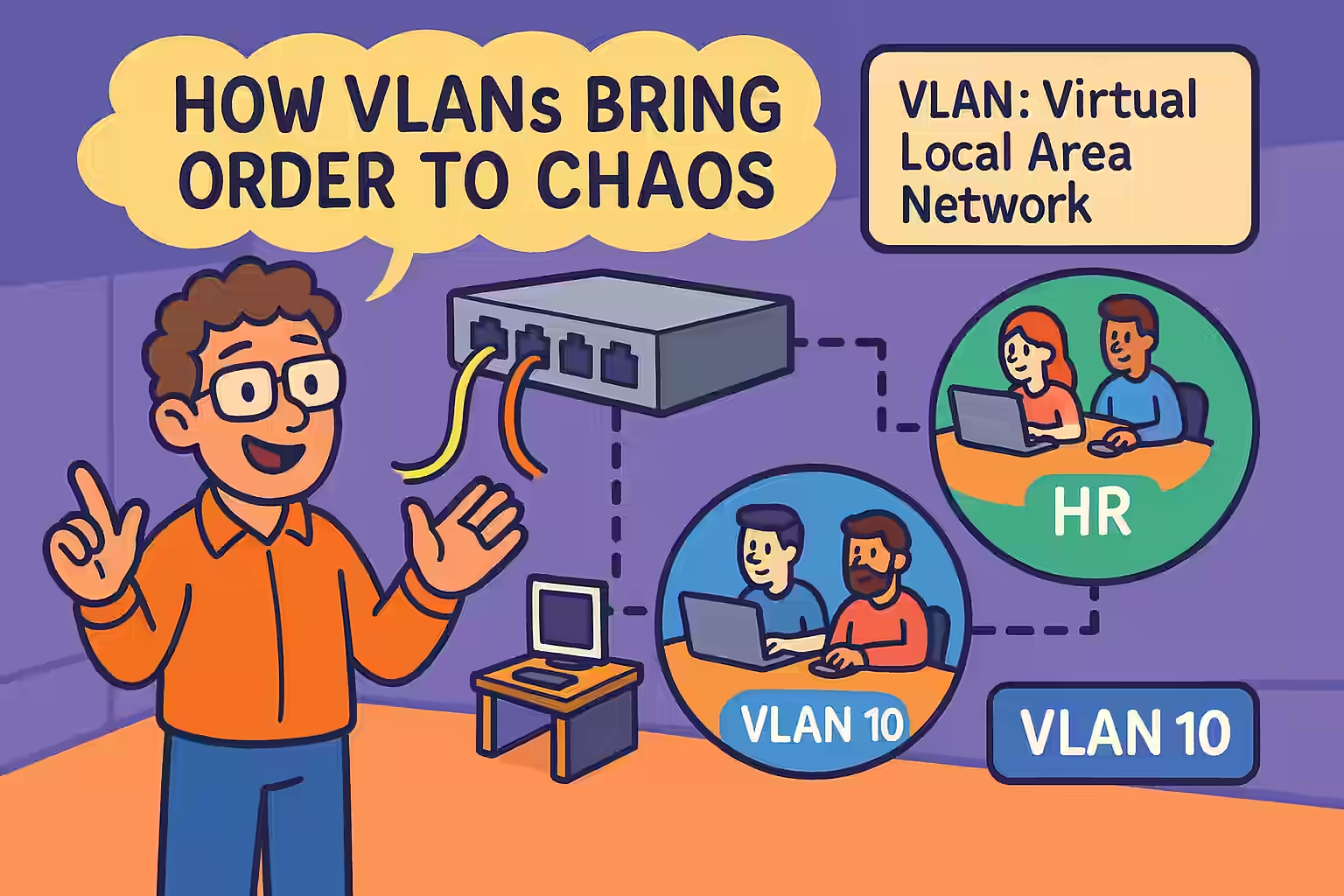Ever felt like your home office was in chaos, with cables running amok and devices talking over each other? Well, imagine that, but on a much larger scale — that’s what unmanaged networks feel like! But fear not — VLANs are here to bring order to this chaos, one virtual boundary at a time!
Virtual LANs (VLANs) are like the bouncers at your favorite club: they make sure only the right folks get into the right rooms. In networking, VLANs logically segment a single physical network into multiple virtual networks, giving you better security, improved performance, and much easier management.
✅ What is a VLAN?
A VLAN is a virtual network within a switch or group of switches, logically dividing a broadcast domain — no new cables, just clever configurations!
✅ Benefits of VLANs:
- Segmentation: Reduce broadcast domains, controlling who can talk to whom.
- Security: Isolate sensitive data and devices from the rest.
- Flexibility: Group users by department, not just by location.
✅ How VLANs Work:
- Tagged frames: VLANs use tags (like 802.1Q) to mark which VLAN each frame belongs to.
- Access ports vs. trunk ports: Access ports connect to end devices (one VLAN per port), while trunk ports connect switches (carrying multiple VLANs).
✅ Basic VLAN Configuration on a Cisco Switch:
Here’s a quick IOS command set to create and assign VLANs:
Switch# configure terminal
Switch(config)# vlan 10
Switch(config-vlan)# name HR
Switch(config-vlan)# exit
Switch(config)# interface FastEthernet 0/1
Switch(config-if)# switchport mode access
Switch(config-if)# switchport access vlan 10And voilà! Port 0/1 is now part of VLAN 10, dedicated to the HR team!
Why VLANs Matter:
Without VLANs, every device would be in one big broadcast party, causing unnecessary traffic and security risks. VLANs help keep things tidy, efficient, and secure.
Quiz Time!
- What does VLAN stand for?
- A) Virtual Learning and Networking
- B) Virtual Local Area Network
- C) Visual LAN
- Answer: B
- What type of port carries multiple VLANs between switches?
- A) Access port
- B) Trunk port
- Answer: B
- True or False: VLANs require physical separation of devices.
- Answer: False
- What is the standard used for VLAN tagging?
- A) 802.3
- B) 802.11
- C) 802.1Q
- Answer: C
- Name one benefit of using VLANs.
- Answer: Improved security, reduced broadcast domains, or network flexibility.
